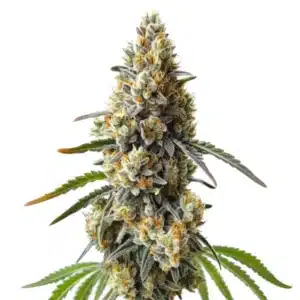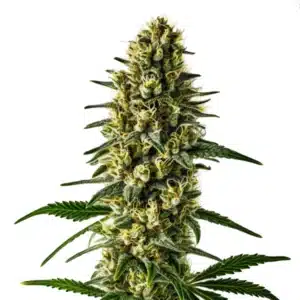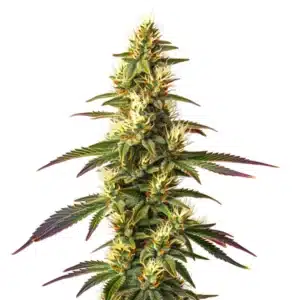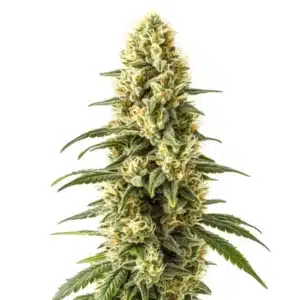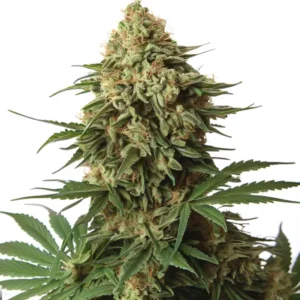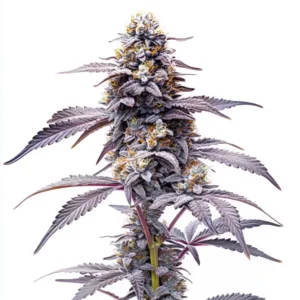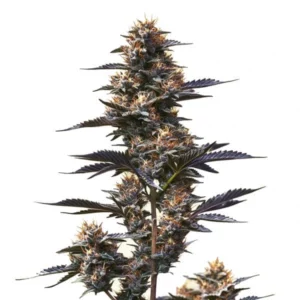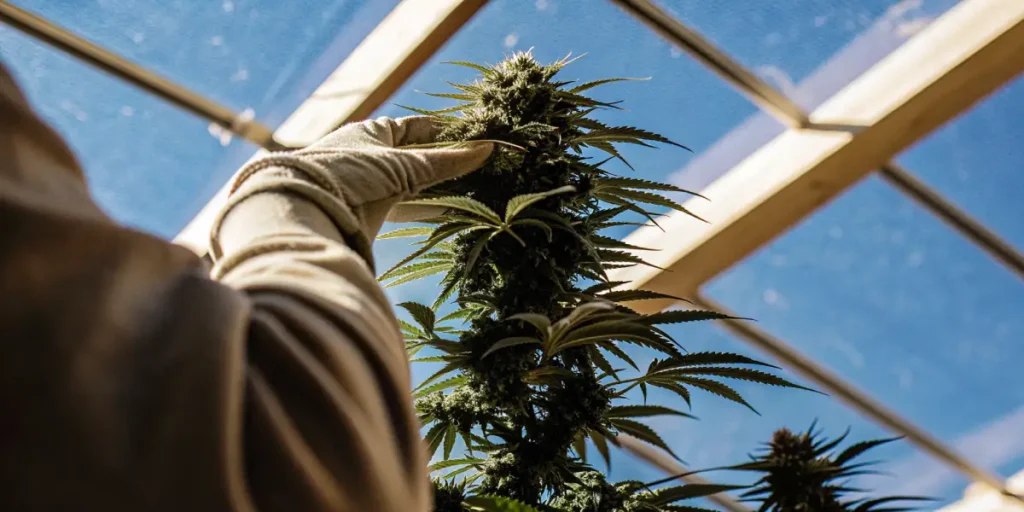
How to Reduce Apical Dominance in Cannabis
In cannabis cultivation, achieving the right plant structure is crucial. Apical dominance is a natural growth pattern where the main stem grows stronger than the side branches. This can result in a tall plant with few yields. Reducing apical dominance in cannabis can lead to bushier plants and more buds.
Apical dominance occurs when the main stem of the plant suppresses the growth of lateral branches. For those growing cannabis, this means fewer flowers and, consequently, lower yields. However, by applying certain techniques, it’s possible to encourage a more even growth pattern.
Recommended Strains
Gelato
|
|
THC | 27% (High) |
|
|
Type | Feminized |
|
|
Yield | High |
|
|
Phenotype | 50% Indica / 50% Sativa |
Critical 2.0
|
|
THC | 18% - 22% (Medium) |
|
|
Type | Feminized |
|
|
Yield | High |
|
|
Phenotype | 60% Indica / 40% Sativa |
For both first-time growers and seasoned cultivators, understanding how to reduce apical dominance in cannabis is key. Techniques like pruning and training can help. By modifying the plant’s natural growth, you can optimize your harvest.
Pruning Techniques
Pruning is a straightforward method to reduce apical dominance. It involves removing parts of the plant to redirect its energy. When done correctly, pruning encourages the plant to grow more side branches. This can lead to a fuller canopy and more flowering sites.
Start by identifying the main stem and the nodes where leaves and branches grow. By cutting above these nodes, you can stimulate the plant to grow two new main stems instead of one. This method is known as topping. It’s an effective way to reduce apical dominance in cannabis plants.
Another important aspect of pruning is timing. Understanding the right time to prune can make a significant difference in plant development. Ideally, pruning should be done during the vegetative stage when the plant is actively growing. This ensures that the plant has enough time to recover and redirect its energy towards lateral growth.
Consistent monitoring is crucial when employing pruning techniques to minimize apical dominance in cannabis cultivation. Regular checks will help you identify which parts of the plant need attention and ensure that the canopy remains even. This proactive approach can significantly enhance the overall structure and health of your plants.
Topping and Fimming
Topping involves cutting the main stem above the node, encouraging two new tops to form. This technique is simple and can significantly reduce apical dominance. It’s best to top your plants when they have at least four to six nodes.
Fimming, a variation of topping, involves pinching or cutting a portion of the new growth. This can result in more than two new branches. While a bit more unpredictable, fimming can create even bushier plants.
Both topping and fimming require precision and care. It’s important to use clean, sharp tools to avoid damaging the plant and to promote healthy new growth. Knowing the plant’s response to these methods can guide you in deciding the best approach for your specific strain.
Integrating these methods for reducing apical dominance in cannabis growth into your routine can be transformative. By alternating between the two, you can create a robust plant structure that maximizes light exposure and nutrient distribution, leading to healthier plants and better yields.
Promos & Deals
Training Methods
Training the plant is another effective strategy for controlling apical dominance. This involves manipulating the plant’s structure without cutting it. Techniques like LST (Low-Stress Training) can help guide the plant’s growth.
LST involves bending and tying down the branches to create a flat canopy. This allows all parts of the plant to receive equal light. Over time, this method can significantly reduce apical dominance, resulting in a more uniform plant structure.
In addition to LST, more advanced techniques such as the Screen of Green (SCROG) method can be used. This involves placing a screen over the plants and weaving the branches through as they grow. This technique not only helps in how to reduce apical dominance in cannabis but also maximizes the use of available light.
Training methods offer flexibility and are particularly useful for growers with limited space. By using strategies for controlling apical dominance in cannabis farming, you can effectively manage the plant’s height and encourage wider growth, optimizing the available growing area.
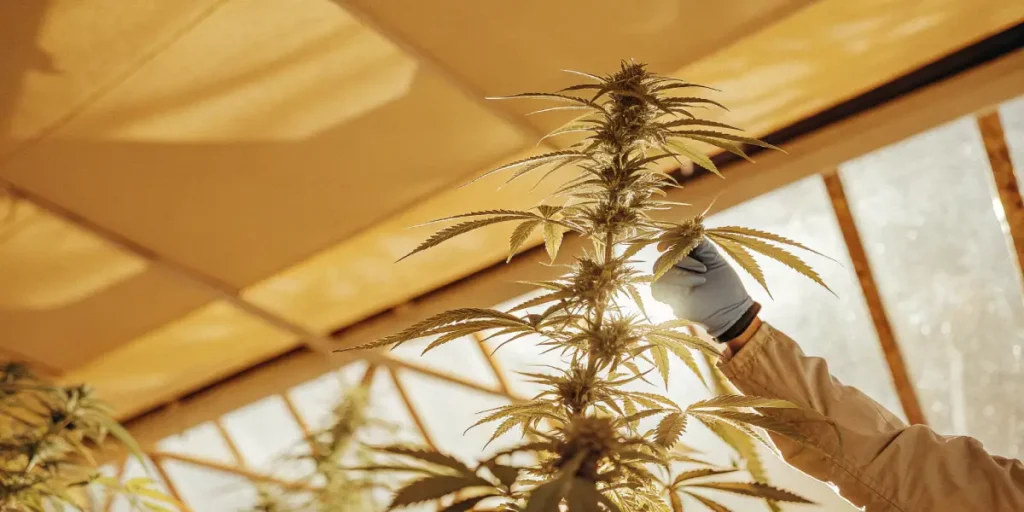
Low-Stress Training (LST)
To perform LST, gently bend the main stem and secure it with a tie. This encourages the side branches to grow upwards, promoting an even canopy. It’s a gentle method that doesn’t stress the plant too much, hence the name.
Unlike pruning, LST allows you to shape the plant progressively. This can be particularly beneficial for beginner growers who are cautious about making cuts. As the plant grows, continue to adjust the ties to maintain the shape.
LST is suitable for all types of cannabis plants, but it’s particularly effective for strains that naturally exhibit strong apical dominance. By gradually training the plant, you can influence its growth direction and balance, ensuring a more efficient use of energy.
This method is not only about reducing apical dominance in cannabis through pruning but also about fostering a nurturing environment where the plant can thrive. As a non-invasive technique, LST helps maintain plant health and enhances overall productivity.
Choosing the Right Strains
Some cannabis strains are more prone to apical dominance than others. Selecting strains with a naturally bushy growth pattern can minimize the need for intervention. Indica-dominant strains often have less apical dominance compared to their Sativa counterparts.
Strains like Critical from Blimburn Seeds offer a more balanced growth pattern. These strains are ideal for those looking to reduce apical dominance with minimal effort. By selecting the right genetics, you can streamline your cultivation process.
When selecting strains, it’s essential to consider your specific growing conditions and goals. By understanding the genetic traits of different strains, you can make informed decisions that align with your cultivation strategy. This is a crucial step in learning how to reduce apical dominance in cannabis plants effectively.
The choice of strain can also impact the overall ease of management and the final yield. By opting for genetics that naturally align with your growth objectives, you can reduce the amount of time and effort required to manage your garden, allowing for a more enjoyable growing experience.
Consider Genetic Traits
When selecting seeds, pay attention to the strain’s growth traits. Some plants naturally grow bushier, which can make managing apical dominance easier. Researching strains on Blimburn Seeds can provide valuable insights into their growth characteristics.
For example, Gelato is known for its robust lateral branching. This makes it an excellent choice for growers looking to minimize apical dominance. Knowing your plant’s genetics is crucial in planning your cultivation strategy.
Being aware of a strain’s growth tendencies allows you to anticipate and plan for its needs. By choosing plants with favorable traits for minimizing apical dominance, you can focus more on optimizing environmental conditions and less on structural interventions.
Ultimately, knowing genetic traits provides a significant advantage in cannabis cultivation. It empowers you to select the best possible strains for your setup, facilitating better management and more rewarding harvests.
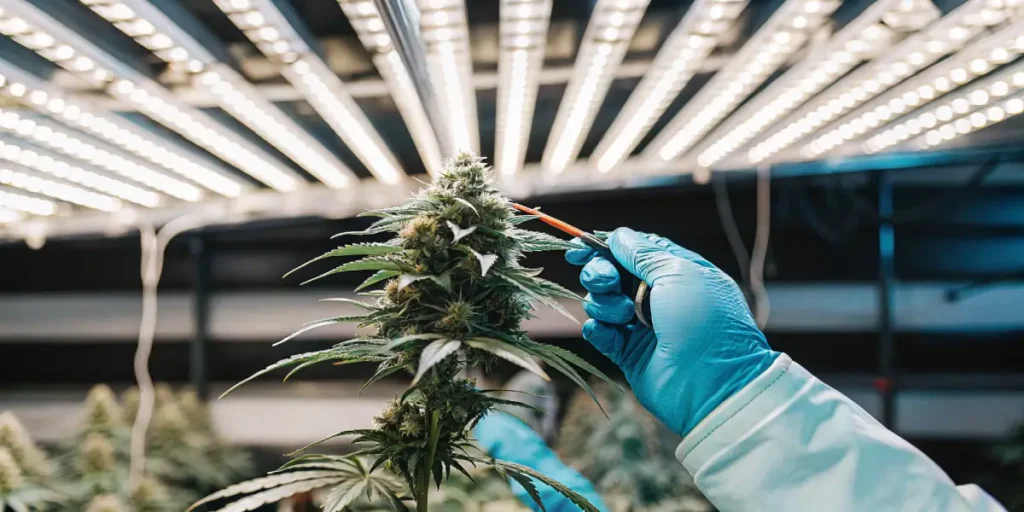
FAQs
What is apical dominance in cannabis plants?
Apical dominance is a natural growth pattern where the main stem of a cannabis plant grows stronger and more dominant than the side branches. This phenomenon is controlled by plant hormones, mainly auxins, which are concentrated at the top of the plant. For growers, this can mean taller plants with fewer lateral branches and buds.
Knowing apical dominance is crucial for effective cannabis cultivation. By managing this growth pattern, you can encourage a bushier plant with more flowering sites. This results in increased yields and a more productive garden.
Apical dominance can vary significantly between different strains, which is why it’s important to recognize and adapt to the specific growth patterns of your plants. With the right knowledge and techniques, reducing apical dominance can lead to a much more fruitful cultivation process.
Effectively managing apical dominance involves a combination of strategic pruning, training, and selecting the right strains. This comprehensive approach ensures that your plants grow evenly and produce the highest possible yields.
How can I reduce apical dominance in cannabis through pruning?
Pruning is a direct method to reduce apical dominance. By cutting the main stem above a node, you encourage the plant to grow two new stems instead of one. This method redistributes growth hormones and energy, promoting a more even plant structure.
Regular pruning sessions help maintain the shape of the plant and prevent the main stem from dominating. As new growth appears, continue to prune strategically to keep the canopy even and ensure light penetration to all parts of the plant.
Pruning not only helps in shaping the plant but also in improving air circulation and light distribution. Knowing when and where to prune can make a noticeable difference in the plant’s health and productivity.
For those learning how to reduce apical dominance in cannabis, consistent and careful pruning is a fundamental skill. It requires observation and practice but offers significant rewards in terms of plant health and yield.
What are some effective methods for reducing apical dominance in cannabis growth?
Several methods can be employed to reduce apical dominance. Pruning techniques like topping and fimming directly alter the plant’s growth pattern. Training methods such as LST allow for shaping the plant without cutting, promoting lateral growth.
Choosing strains with less apical dominance can also make a significant difference. Indica-dominant strains or those with naturally bushy growth patterns can minimize the need for interventions, making cultivation simpler and more efficient.
Combining these methods for reducing apical dominance in cannabis growth can provide a tailored approach that meets the unique needs of your plants. By understanding and implementing these techniques, you can greatly enhance the overall productivity of your garden.
These methods offer flexibility and adaptability, allowing you to respond to the specific growth patterns of your plants. This adaptability is key to successful cannabis cultivation, ensuring that your plants develop in the most favorable way possible.
Why is controlling apical dominance important in cannabis farming?
Controlling apical dominance is crucial for maximizing yields in cannabis farming. Plants with unchecked apical dominance tend to be tall and sparse, leading to fewer buds. By managing this growth pattern, growers can ensure a fuller canopy and more flowering sites.
Effective control of apical dominance also ensures that light reaches all parts of the plant. This is essential for healthy growth and optimal bud development. Overall, managing apical dominance leads to healthier plants and more productive gardens.
Besides to increased yields, controlling apical dominance contributes to a more manageable plant structure. This ease of management allows for better air circulation and reduces the risk of mold and pests, further enhancing plant health.
Strategies for controlling apical dominance in cannabis farming are integral to achieving a successful harvest. By applying these techniques, you can cultivate a garden that is both productive and sustainable, aligning with your overall growing objectives.
Are there specific strains that are easier to manage in terms of apical dominance?
Yes, certain strains are easier to manage when it comes to apical dominance. Indica-dominant strains or those known for their lateral growth, like Critical and Gelato from Blimburn Seeds, naturally exhibit a bushier growth pattern. These strains require less intervention and are ideal for growers looking to reduce apical dominance with minimal effort.
Researching strain characteristics before purchasing seeds can help you select the best options for your growing goals. By choosing the right genetics, you can simplify your cultivation process and ensure a successful harvest.
Knowing the growth tendencies of specific strains allows you to anticipate their needs and cater to them effectively. This proactive approach can significantly enhance the ease and success of your cultivation efforts.
Selecting strains with favorable growth traits is a strategic move in how to reduce apical dominance in cannabis. It minimizes the need for extensive interventions, allowing you to focus more on optimizing environmental conditions and less on structural adjustments.





